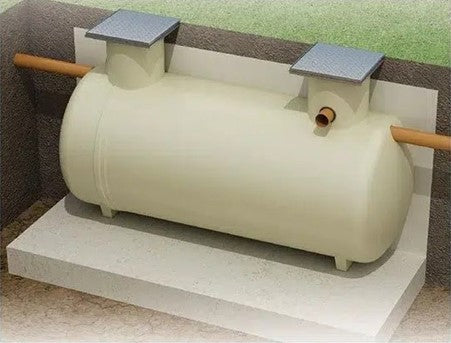Managing waste efficiently is crucial for both homes and businesses, especially in areas without access to a mains sewer system. In this blog post, we highlight the advantages of using septic tanks and sewage treatment systems, from their practical functionality and positive environmental impact to the relatively low maintenance they require. Read on to discover how these innovative systems can benefit you and ensure sustainable waste management.
What are Septic Tanks and Sewage Treatment Systems?
Septic tanks and sewage treatment systems are essential components of wastewater management, particularly in areas not connected to a mains sewer system. These systems are designed to treat and dispose of sewage in a safe and environmentally friendly manner. A septic tank is an underground chamber where sewage is collected and allowed to decompose through bacterial activity. Sewage treatment systems, on the other hand, are more advanced and include additional processes to further treat the wastewater before it is released into the environment.
Benefits of Septic Tanks and Sewage Treatment Systems:
Septic tanks and sewage treatment systems can be a cost-effective solution for properties not connected to the mains sewer. The initial installation costs can be offset by the low operating and maintenance costs over the system’s lifespan. Additionally, these systems can increase the value of a property by providing a reliable and efficient waste management solution.
Properly maintained septic tanks and sewage treatment systems have a minimal environmental impact. They reduce the risk of groundwater contamination and help to protect local ecosystems. Sewage treatment systems, in particular, treat wastewater to a high standard, ensuring that the effluent released is safe and environmentally friendly.
Both septic tanks and sewage treatment systems require relatively low maintenance compared to other waste management solutions. Regular inspections and occasional pumping of the septic tank are typically all that is needed to keep the system running efficiently. Sewage treatment systems may require more frequent servicing, but modern systems are designed to be user-friendly and reliable.
For properties in remote or rural areas, being independent from the mains sewer system is a significant advantage. Septic tanks and sewage treatment systems provide a self-sufficient waste management solution, reducing reliance on external infrastructure.
How Septic Tanks and Sewage Treatment Systems Work:
Septic tanks and sewage treatment systems operate on the principles of separation and biological treatment to manage household waste efficiently and safely. Understanding their workings helps in appreciating their benefits and maintaining them properly.
Septic Tanks
In a septic tank, wastewater flows from the property into the underground chamber where the initial treatment occurs. Here, solids settle at the bottom forming sludge, while oils and grease rise to the top as scum. The middle layer of liquid, called effluent, is relatively clear. This effluent then exits the tank into a drainage field or soakaway system, where it undergoes further natural filtration and decomposition.
Sewage Treatment Systems
Sewage treatment systems, on the other hand, involve a more complex process. Initially, the system separates solids, oils, and effluent. The effluent then enters an aeration chamber where air is introduced, promoting the growth of aerobic bacteria that break down the organic matter. This biologically treated wastewater then passes through a biofilter or additional treatment units for further purification. In some systems, a final disinfection stage using methods such as UV treatment ensures the treated effluent is free from harmful pathogens. The highly treated effluent is then safe to be discharged into watercourses or soakaway systems.
Installing a Septic Tank or Sewage Treatment System:
Installing a septic tank or sewage treatment system involves several steps, from planning and obtaining permissions to site assessment and actual installation.
Planning and Permissions: Before installation, it's essential to check with local authorities regarding planning permissions and environmental regulations. In the UK, the Environment Agency and local councils have specific guidelines for the installation and maintenance of these systems.
Site Assessment: A professional site assessment is necessary to determine the suitability of the location for a septic tank or sewage treatment system. Factors such as soil type, groundwater levels, and the proximity to watercourses must be considered to ensure effective and safe waste management.
Installation Process: Once planning permissions are obtained and the site assessment is complete, the installation process begins. This involves excavating a suitable site to accommodate the septic tank or sewage treatment plant. The tank or treatment unit is then installed in the excavation and connected to the property’s drainage system. For septic tanks, a drainage field or soakaway system is also installed to manage the effluent discharge. The system is then tested to ensure it is functioning correctly and meets regulatory standards.
Maintaining Your Septic Tank or Sewage Treatment System:

Regular maintenance is crucial to ensure the longevity and efficiency of septic tanks and sewage treatment systems. Here are some tips for proper maintenance:
Regular Inspections: Regular inspections help to identify any potential issues early, preventing costly repairs. Inspect the tank and the surrounding area for signs of leakage or damage. Check the effluent levels and ensure that the system is functioning as intended.
Pumping: Septic tanks should be pumped every 3 to 5 years to remove the accumulated sludge and scum. This prevents the system from becoming overloaded and ensures efficient operation. The frequency of pumping may vary depending on the size of the tank and the amount of wastewater generated.
Avoiding Harmful Chemicals: Avoid flushing harmful chemicals such as solvents, pesticides, and grease down the drain. These substances can disrupt the bacterial balance in the tank and reduce the system's efficiency. Use septic-safe cleaning products and dispose of hazardous materials properly.
Conserving Water: Excessive water usage can overload the septic system, leading to inefficiency and potential failure. Conserve water by fixing leaks, using water-efficient fixtures, and spreading out laundry and dishwashing loads.
Professional Servicing: Regular servicing by a professional can help maintain the efficiency of sewage treatment systems. This includes checking mechanical components, cleaning filters, and ensuring that aeration units are functioning correctly. Professionals can also perform more thorough inspections and recommend necessary repairs or upgrades.
Choose Your Septic Tank and Sewage Treatment Systems with Drainage Supplies Direct Today!
Septic tanks and sewage treatment systems play a crucial role in effective waste management, particularly in areas not connected to the mains sewer. Understanding how these systems work, their benefits, and the importance of regular maintenance can help property owners make informed decisions and ensure their systems operate efficiently. By investing in advanced and eco-friendly systems, homeowners can enhance their property's value while contributing to environmental sustainability. Speak to our team today on 01752 936152 or email us at sales@drainagesuppliesdirect.co.uk for expert advice in choosing the best septic tank or sewage treatment system to suit your project’s needs.

